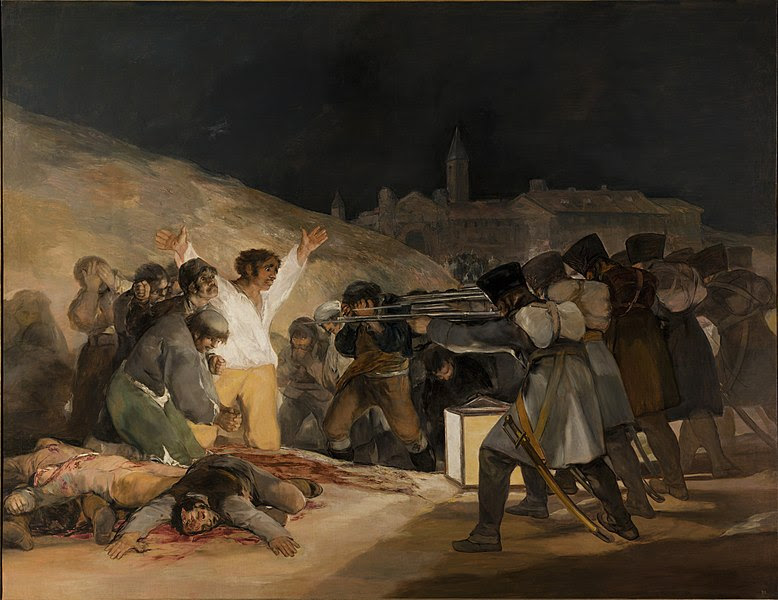Tres Plus Dos Equals Cinco de Mayo
The painting often identified as commemorating Cinco de Mayo in Mexico actually depicts the Spanish war with Napoleon's France two generations before the French war in Mexico. Nor is the event of Cinco de Mayo of much political significance--other than ironic--although it was a shocking military one.
Goya sought to commemorate Spanish resistance to Napoleon's armies during the occupation of 1808 in the Peninsular War, a savage affair fought by Spanish partisans against hard, regular French troops. This famous painting was The Third of May (along with its companion piece, The Second of May 1808 or The Charge of the Mamelukes.)
Third of May:
A half-century later in 1862, Spain's creditors ran out of patience with her debts. France, eager to expand her territory and following long-accepted custom of seizing a reluctant debtor's ports and collecting the tax receipts in lieu of their loan, invaded the Mexican port of Veracruz with the intent of collecting customs receipts until the debt was repaid. They also had another aim: They hoped to make their stay permanent with the placement of Maximilian on a Mexican throne. The French marched inland. This was an experienced, tough group and they proceeded virtually unopposed until they were confronted by a good sized Mexican force at the small town of Puebla. There, against all expectation and logic, on 5 May 1862, Mexican troops, led by Ignacio Zaragoza, defeated a larger force of the elite French Foreign Legion. Mexican President Benito Juarez declared 5 May a national holiday -- Cinco de Mayo--although he certainly knew the truth. The French replaced their commander and sent thirty thousand reinforcements. In no time they controlled the cities and created the election that elected Maximilian Emperor of México.

No comments:
Post a Comment